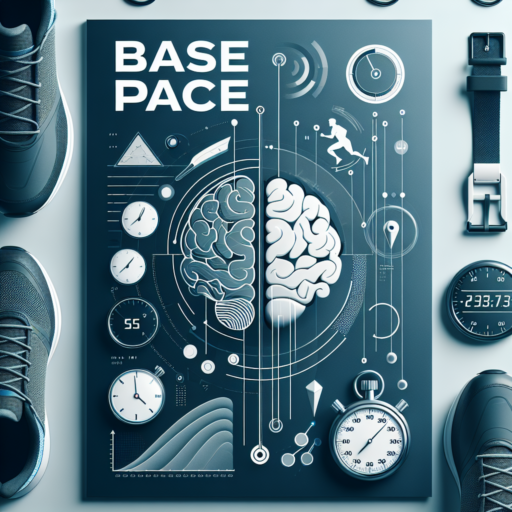What is the best pacing strategy for a half marathon?
Identifying the best pacing strategy for a half marathon is crucial for both new and seasoned runners aiming to achieve their personal best. A successful pacing strategy involves balancing speed and endurance, ensuring that energy reserves are efficiently managed throughout the 13.1-mile race. This approach helps prevent the common pitfall of starting too fast and struggling in the later stages, a scenario all too familiar to many runners.
One widely recommended pacing strategy is the negative split. This tactic involves dividing the race into two halves, starting the first half at a deliberately conservative pace, then gradually increasing your speed in the second half. This method not only conserves energy for the later miles but also capitalizes on the psychological boost of passing other runners as you approach the finish line. Implementing a negative split requires discipline and a good understanding of one’s limits to avoid going too slow at the start or too fast towards the end.
Another effective strategy is to maintain an even pace throughout the race. This means running at a consistent speed from start to finish. It’s arguably the simplest strategy to execute but requires a thorough understanding of your running capability. Runners must know exactly the pace they can sustain over 13.1 miles without significant fatigue setting in. This strategy is particularly favored by those with a strong sense of their own pacing and can be very effective for achieving a personal best.
How do I pace myself for a 2 hour half marathon?
Pacing yourself for a 2-hour half marathon requires a blend of physical preparation and strategic planning. The allure of finishing a 13.1-mile race in under two hours captivates many runners, making it a popular goal. Pacing is about finding a balance that enables you to cover the entire distance efficiently without burning out too soon.
First and foremost, understanding your current running capabilities is essential. Assessing your recent race times or undertaking a timed run can be a good gauge. The key to a 2-hour finish is maintaining an average pace of approximately 9:09 minutes per mile. This consistent pace is achievable through regular interval training and tempo runs, designed to enhance your endurance and speed.
Structuring Your Race Strategy
Break down the race into smaller, manageable sections. The first few miles should be run slightly slower than your target pace, allowing your body to warm up and conserve energy for the later stages. As you approach the midway point, aim to gradually increase your pace. This approach can prevent the common pitfall of starting too aggressively, which might lead to fatigue in the later stages. Regularly check your pace to ensure that you’re on track, but remember to listen to your body and adjust accordingly. This strategic segmentation can be beneficial in maintaining a steady rhythm throughout the race.
What is half marathon pace?
The half marathon pace is a critical metric for runners of all levels, guiding their training and race strategies. This pace, typically measured in minutes per mile or kilometers, significantly varies from one runner to another, based on several factors such as fitness level, experience, and running goals. Understanding your personalized half marathon pace is essential for setting realistic targets and achieving optimal performance on race day.
Many runners aim to determine their ideal half marathon pace to tailor their training sessions effectively. This involves calculating their average pace per mile over the half marathon distance of 13.1 miles (or 21.1 kilometers). Training tools and pace calculators can provide insights into what your target pace should be for both training and racing. Additionally, incorporating various training runs at your goal pace is crucial for building endurance and speed tailored to the half marathon.
Moreover, achieving and maintaining your desired half marathon pace requires a strategic approach to training. Incorporating a mix of long runs, speed work, and tempo runs can help improve your pace sustainability over the half marathon distance. Respecting rest days and allowing for proper recovery is equally important to prevent overtraining and injuries. By understanding and applying these principles, runners can work towards their half marathon goals with confidence and precision.
No se han encontrado productos.
How to push through a half marathon?
Pushing through a half marathon involves not just physical preparation, but mental readiness as well. Understanding the critical aspects of both can significantly improve your chances of success. Whether you’re a seasoned runner looking to better your time, or a newbie aiming to cross the finish line, there are proven strategies that can help you achieve your goals.
Develop a Consistent Training Plan
Success in a half marathon starts long before race day. Developing a consistent training plan that gradually builds your endurance and speed is crucial. It’s not just about running longer distances, but also including rest days and cross-training to prevent injuries. A well-structured plan increases your stamina and prepares your body for the rigors of running 13.1 miles.
Master Your Mental Game
Mental toughness plays a pivotal role in your ability to push through the challenges of a half marathon. Strategies such as positive self-talk, visualization, and setting small, achievable goals can greatly influence your performance. Learning to control your pacing and listening to your body’s signals during the race is equally important. It’s not uncommon for the mental battle to be as taxing as the physical one, making mental preparation a key aspect of your training.




